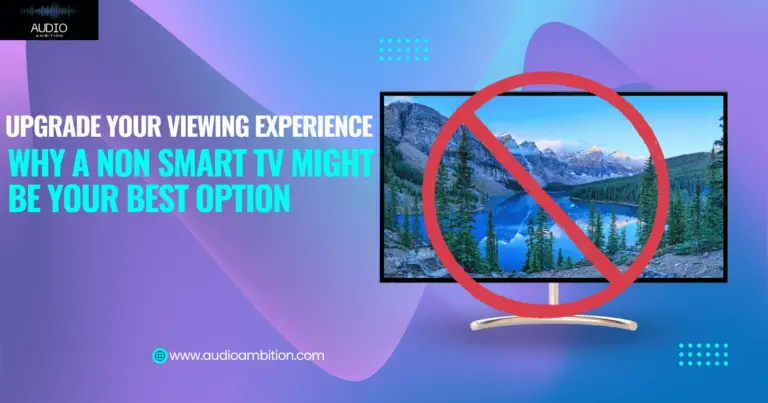Has the thought of purchasing a new TV crossed your mind? You’ve been to the market and heard some terms like Nanocell TV, QLED, and OLED. One must’ve approached you to show the differences too. Are you searching about what is Nanocell TV online? You’ve been to the right place. Read the article in detail to learn more about what is Nanocell TV.
Is Nanocell TV Worth Buying?
Nanocell TVs are an excellent option for people searching for a top-notch TV in a reasonable price bracket. The Nanocell TV operates on the backlight layer of LEDs, which filter out the wavelengths. The resulting picture reproduced is accurate and a brighter image. The picture production is similar to an OLED TV with approximately half its price.
What is Nanocell TV?
Nanocell TV is the term introduced by LG for its latest TV technologies. The rivalry between brands to market their new products and technologies isn’t new. Each company introduces its TV with a new name and minor technological upgrades, which are then heavily marketed.
Nanocell TV technology by LG offers wider viewing angles with robust color contrast and clarity. The TVs are backlit, similar to QLEDs, which have a layer of nanoparticles to enhance color accuracy. The watching experience is impeccable when you watch your favorite Netflix series and movies.
What is NanocellTV: How Does It Work?
A question arises when we discuss what is Nanocell TV and how it works. The Nanocell TVs consist of filter layers that absorb the excess light wavelengths, improving the color output and depth manifold. The image produced with clarity knows no bounds. Therefore, a Nanocell TV may be a good option if you are looking for better image production.
However, a Nanocell TV offers nothing extra compared to a 4K TV. Both produce the same eight million pixels of images. The light that comes mainly affects color production, whereas adjacent pixels can also bleed color to other pixels. This does affect color accuracy. Some Nanocell TVs support Full Array Local Dimming (FALD) too.
FALD is a smart technology that senses dark scenes on the TV and dims the backlight for an optimal viewing experience. The local dimming is similar to OLED TV displays. The TVs also support Dolby HDR vision as well as Dolby Atmos sound. The Dolby sound system ensures a cinematic experience in the comfort of your home.
What is Nanocell TV: Nanocell TVs VS QLED TVs
Nanocell TVs and QLED TVs are similar in their working, as they both require backlights to produce colors. We’ve discussed some differences between Nanocell TVs and QLED TVs. It will give you a better idea when we talk about Nanocell TV.
Image Production
Nanocell TV offers better vibrance with crisp and clear color and image production. The black images may not be as good as a QLED. On the other hand, a QLED TV may reproduce darker but near-to-natural images.
Brightness of the TV
Nanocell TVs refract light from the screen; therefore, the images are far brighter than those of a QLED. Each pixel has an individual LED to produce brighter images on display. A QLED may burn in such a case from a particular bright pixel area, unlike a Nanocell TV.
Viewing Angles
Nanocell TVs come with IPS display panels. The IPS panels offer better viewing angles when compared to QLEDs which come with VA panels.
Gaming Response
The refresh rates for Nanocell TVs and QLED TVs are similar. Therefore, picking one may be easy. However, for many, the choice of TV would be a QLED, as it reproduces blacks better than a Nanocell TV.
What is Nanocell TV: Nanocell TVs VS OLED TVs
When we discuss what is Nanocell TV, some basic differences between certain TV technologies are equally essential. We’ll discuss the differences between Nanocell TVs and OLED TVs here for ease of understanding.
Image Production
OLEDs don’t have a backlight but instead have individual pixels that produce an image; therefore, images are more lifelike and realistic with perfect deep black production. Whereas Nanocell TVs have backlights, the blacks are not that deep, but color production is vibrant with more brightness.
Power Consumption
OLEDs are more power efficient, as they don’t have a backlight running continuously. On the other hand, Nanocell TVs have backlights running continuously; they consume more power.
Viewing Angles
Nanocell and OLED TVs both offer amazing viewing angles. You won’t need to fight for a spot in front of the TV on movie night on the weekend.
Gaming Response
The refresh rate or response time is essential for gamers. The time taken between switching colors from one to another is referred to as the refresh rate. The gaming response in OLEDs is 1ms, whereas, in Nanocell TVs, it is approximately 5ms to 10ms. Although the difference is negligible, considered between gamers.
Burn-In
Burn-in is the ghostly appearance of a static picture on the screen after the screen remains idle for longer. OLEDs are prone to burn-in as the pixels burn on a frozen image. The Nanocell TVs have no such issue of burn-in in their TVs. Although now the brands produce an anti-burn-in feature in OLEDs, this is a prominent feature of the TVs.
Pros and Cons
| PROS | CONS |
| Crisp and clear image production. | High power consumption as backlight remains on |
| The viewing range is excellent | No deep blacks, unlike OLEDs |
| No risk of burn-in | Image quality may not be impeccable like OLED TVs |
| Less expensive than an OLED TV |
To give you a better insight into what is Nanocell TV, we’ve attached a YouTube video. Please go through the video and learn more about it.
Final Thoughts

Nanocell TVs offer good color accuracy and excellent viewing angles. If you are fond of watching movies and series in your free time, a Nanocell TV may be your go-to. The TVs also offer FALD, which produces brighter and sharper images.
The Nanocell TVs offer an experience similar to a lifelike watching experience. Moreover, the nanocell TVs are layered with anti-reflective film on the panel, increasing the watching experience. We hope the article has helped you answer the question of what is Nanocell TV and you’ve made up your mind to lay your hands on one.






